
|
Vol 71 |
Page 19 |
Privacy Policy | Editorial Policy | Profit Policy | Join the Association | List of Members | Contact us | Index | Links
Back Go to page: 1 2 3 4 5 6 7 8 9 10 11 12 13 14 15 16 17 18 19 20 Forward
While the Association does not necessarily agree or disagree with everything on this page,
we do respect the right of everyone to have their say.
Contents
Funeral benefits - VEA vs MRCA.
Wallaby Airlines to the rescue.
Where are they now?
Otto Cossalter.
Wayne Howard is trying to contact Otto Cossalter who Wayne thinks would be about 70 now. If you can help, let us know and we’ll pass on the info to Wayne.
Your say!
Super.
Ernmie Gimm
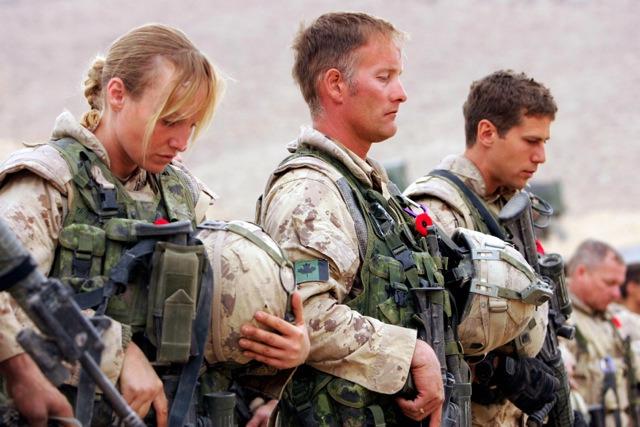
No one has been able to explain to me why young men and women serve in the Australian Armed Forces for up to 20 years, risking their lives and limbs, protecting our freedom and only get a small percentage of their pay on retirement; while Politicians hold their political positions in the safe confines of the Nation's Capital, protected by these same men and women and receive an outstanding pension .... after serving only two terms.
It just does not make any sense!!
Radschool History
David Marr wrote: “Seems to be a bit of confusion about RMC and RMT training at Ballarat. I did my RMC at Ballarat in 1960 and was on the last course, (23RMC) to Pass-out there at the end of the year. We had home leave over Christmas and returned to pool at Ballarat until I was posted to Butterworth. RTC courses were being conducted at Ballarat in 1960, as well as Radio Apprentices and Signallers.
I returned from Butterworth to Laverton in October 1962 and joined 17RTC. On completion I was posted to 11 Sqn. at Richmond.”
Chinese Scientists warn of imminent Global Cooling
Climate change is real, the climate changes — this fact is never disputed. A new study, led by prominent Chinese scientists, has found that winters in northern China have been warming for the past 6,000 years – unrelated to human activity – but now the prospect of a sudden and severe bout of global cooling is on the horizon and poses a serious danger.

The paper, which has been accepted for publication by the online Journal of Geophysical Research, found that winds from Arctic Siberia have been growing weaker for thousands of years, the conifer tree line has been retreating north and there has been a steady rise in biodiversity in a general warming trend that continues today. And that’s another thing AGW alarmists fail to address — increasing temperatures ALWAYS result in increased biodiversity. Life loves warmth and, furthermore, it loves carbon.
This weakening of the Siberian wind, according to the researchers, appears to have nothing to do with the increase in greenhouse gases which began with the industrial revolution. Lead scientist Dr Wu Jing, from the Chinese Academy of Sciences, said the study had found no evidence of human influence on northern China’s warming winters.
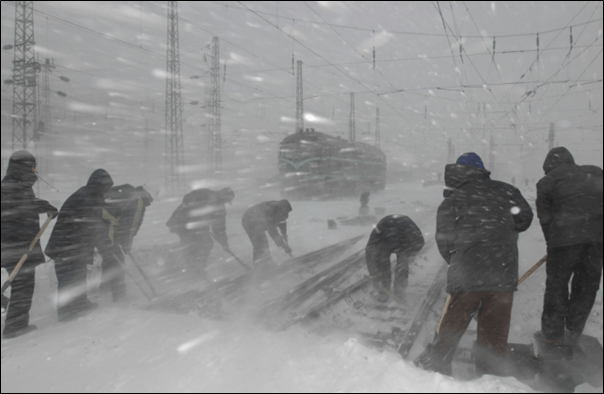
Rail-workers braving the cold in central China in 2008 (during solar minimum of weak solar cycle 24), when the nation was hit by devastating winter storms.
“Driving forces include the sun, the atmosphere and its interaction with the ocean,” Wu explained. “We have detected no evidence of human influence but that doesn’t mean we can just relax and do nothing.”
Wu and her colleagues are worried that, as societies become further indoctrinated by the concept of global warming, people will develop a misplaced confidence in our ability to control the climate, which we cannot. Nature, they warned, will likely trick us and catch us totally unprepared, potentially causing chaos, panic, famine and even wars.
Wu and her colleagues have found that winter warming over the past 6,000 years has been anything but linear, with violent ups and downs occurring roughly every 500 years. After more than 13 years of dedicated research across volcanic lakes in the wilderness of the Greater Khingan Mountain Range in Inner Mongolia, the scientists collected and crunched climate data spanning as far back as 10,000 years.
Their findings confirmed an earlier study by a separate team of Chinese scientists, published in 2014, which first detected the 500-year cyclical pattern of China’s summer monsoons and linked it to solar activity. The 2014 paper, which drew on 5,000 years’ worth of proxy data, suggested the current warm phase would end within the next several decades, ushering in a brutal 250 year cooling phase.
Wu said her latest study not only helped to flesh-out the 500-year cycle, but also revealed a previously unknown mechanism behind the phenomenon, which suggested the impact of the sun on the Earth’s climate is much greater than previously thought. According to Wu, the variation in solar activity alone was not normally strong enough to induce the rapid changes in vegetation the research team observed within the sediment cores of the volcanic lakes. Instead, the scientists found the warming impact was amplified by a massive interaction between surface seawater and the atmosphere in the Pacific Ocean known as the ‘El Nino-Southern Oscillation’.
As a result of the research findings, Wu said she was now much more worried about global cooling than global warming. “A sharp drop in temperature will benefit nobody,” she said. “The biggest problem is that we know it will come, but we don’t know exactly when.”
The cold times are returning in line with historically low solar activity and a growing number of scientists from all corners of the world are coming out with this warning. Even NASA agrees, in part at least, with their SC25 forecast revealing it will be “the weakest [solar cycle] of the past 200 years” (www.nasa.gov), with the agency correlating previous solar shutdowns to prolonged periods of global cooling.
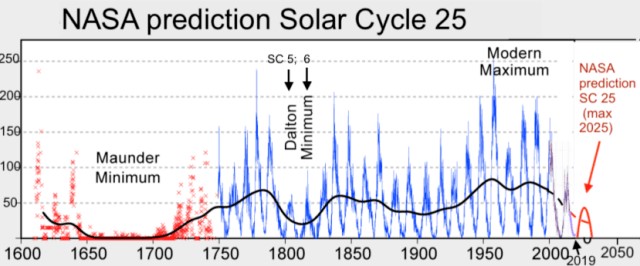
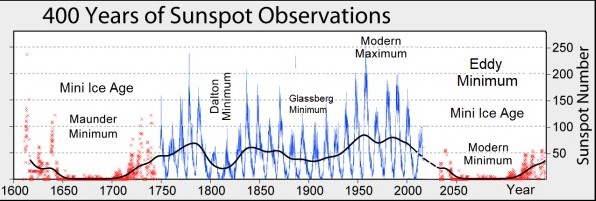
People need to prepare for the cold, but unfortunately the message stuck on loop across the MSM is one of impending catastrophic warmth, which is illogical and misguided at best and unfortunately we don’t have long.

VEA vs MRCA
Recently we wrote to the Minister, Darren Chester, asking if and when the Department would administer changers to the funeral benefits under VEA to bring it in line with MRCA. You can read that letter HERE.
His Chief of Staff, Robert Curtin wrote back, unfortunately, not saying much. You can see his reply HERE
The Productivity Commission released its report – A better way to support Veterans, on the 4th July 2019, a full 14 months ago, you can read the report’s Overview and Recommendations HERE. On Page 39 of that report you will find the following sentence:
The funeral allowance available under the VEA should be aligned with the MRCA funeral allowance for veterans whose dependants would receive a funeral allowance under the MRCA
Don’t hold your breath.
ADF Inquiry
Peter Condon
The Inspector-General of the Australian Defence Force (IGADF) is conducting an Inquiry into rumours of possible breaches of the Laws of Armed Conflict by members of the Australian Defence Force (ADF) in Afghanistan, between 2005 and 2016.
To do this inquiry, the IGADF has placed notices in local Afghani newspapers seeking evidence of possible breaches of the laws of armed conflict by Australian servicemen while on operations in a war zone. What an incredible ask. What kind of un-Australian legal professional suggested this approach. Basically, they are asking the enemy to list their complaints into Aussie behaviour while on patrols—no doubt the Afghanis are expecting some monetary compensation. I find the IGADF approach positively appalling.
Being a retired serviceman who served as a Forward Air Controller in Vietnam, where I heard of Viet Cong atrocities against local village leaders and others, I know that usual standards deteriorate when on the battlefield. One cannot suppress the emotion of hate for an enemy combatant when one sees the enemy soldier cut a mate’s throat. Do you kill that enemy soldier or take him as a prisoner during the hectic battle in progress? If arresting him may cause you to be killed, you kill him. All readers will have experienced the hate that I’m trying to describe when they viewed videos of recent Islamic State atrocities such as the cutting off of a defenceless prisoner’s head with a knife and the burning alive of captives in a cage—and that was not while under extreme pressure on the battlefield.
The current enemies who we are fighting have no rules. Changes were made to the Military Justice System in 1985 where the purpose of the Defence Force Discipline Act (DFDA) is to maintain and enforce military discipline. It applies to all Australian Defence Force members in times of peace and war and includes offences that are uniquely military and other offences that occur in a military environment. However, having legal professionals, or anybody else without battlefield experience making decisions on a soldier’s behaviour on the battlefield is just not appropriate. They don’t understand the complex emotions involved in battle. I often heard the fear in the voices of the infantrymen under attack when they asked me for help.
Prior to 1985, Commanding Officers in a combat zone heard charges against their subordinates, and understanding the environment in which the offence occurred, made a decision to punish the offender or not. More serious charges were heard by a Courts Martial panel comprised of senior war experienced officers. The decision was not handed to higher headquarters in Australia years later where the legal teams have no clues other than what is written in a book of law. Peacetime experiences cannot be compared.
Some time ago I researched Charles Bean’s writing on the Gallipoli landing in 1915 and I thought I should include a couple of quotes here for the members of the IGADF team. When the Aussie soldiers were rushing up the side of Ari Burnu Knoll only minutes after landing in their small boats, an Australian soldier captured a Turk soldier with his bayonet because his rifle was still full of sand. “Prisoner here” he shouted. “Shoot the bastard” was all he heard from his mates scrambling up the hill. The men had been constantly warned that Turks mutilated men whom they captured or found wounded; but in this case the Turk soldier was escorted down to the beach. War is a dirty business.
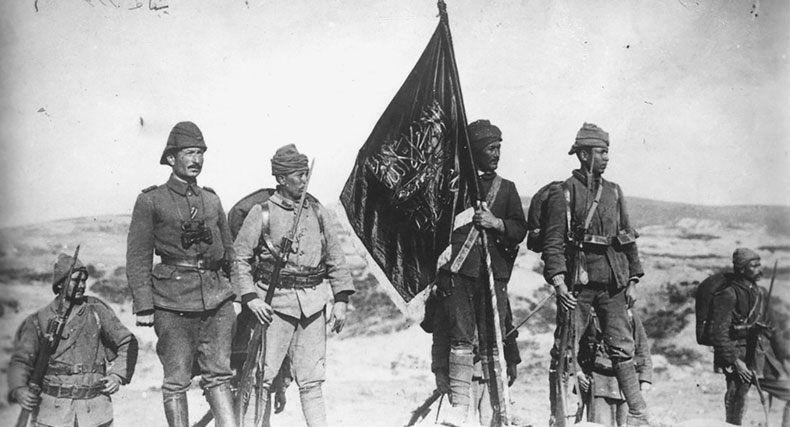
Soon after the Turk was spared, some Turks who had caused havoc on one of the landing boats at close range below the Knoll ran from their trench hoping to escape along Shrapnel Gully, but they were chased and caught. “As the Australians got among them, the Turks threw down their rifles; but they were too many to capture, and they were consequently shot.” These two incidents happened in the first 60 minutes after landing so any reader should get an appreciation of what probably went on for the remainder of the first day—let alone the whole war. Hate in war is
normal. In fact, if you want to win the war, hate is expected.
The Afghanistan Inquiry called by the Inspector General of the Australian Defence Force is a most un-Australian move. May I suggest that the Australian Government steps in and stops this extraordinary hearing. To me it is downright disgusting for the Australian Defence Force to be investigating battlefield actions of our soldiers years after the events supposedly took place. Are they going to go back and examine all of the WWI, WWII, Korea and Vietnam actions too?
Yes, there were more. Remember, besides hate on the battlefield there is plenty of fear there too; combine the two and you get some pretty unpredictable soldiers. Unfortunately, the inquiry lawyers would not have experienced those battlefield emotions. Let’s hope the judges have front line experience, or at least can suggest to the government that the inquiry be abandoned because their task involves more than the written law; and they are not qualified to judge.
A shameful episode in the governance of the Australian Defence Force.
Peter Condon, Southport QLD 4215
(Retired RAAF Officer)
Peter Condon

Wallaby Airlines hops in to help evacuate endangered wildlife from ACT fires and hot weather
Back in February, when the fires raged through the bottom half of Australia, 35 Sqn a tAmberley was called on to do a different sort of job.
With a heatwave and high winds forecast, the call was made to evacuate the Tidbinbilla Nature Reserve, near Canberra.
It was a last resort decision, made necessary by the Orroral Valley bushfire that continued to burn in Namadgi National Park. "We had this threshold of when it got to a place called Corin Dam, regardless of where it went from there, we decided we'd evacuate the animals," said Peter Cotsell, director of the Namadgi National Park, Tidbinbilla Nature Reserve, and the Murrumbidgee River Corridor. "It was a good time to evacuate and I believe we did the right thing."
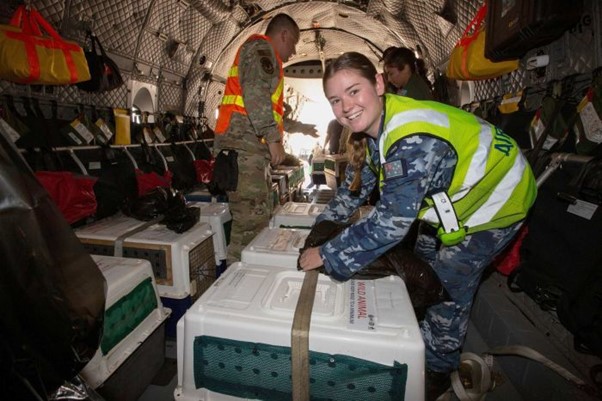
Moving the evacuees, critically endangered brush-tailed rock wallabies and eastern bettongs, across state lines during a bushfire crisis was not going to be easy. It was not just a matter of booking an aircraft large enough to carry so many animals; like any flight, it was important to keep the 'passengers' calm.
Emma Nearmy loading the wallabies.
"You're facing the challenges of them getting really stressed and just dying from stress," biodiversity director Annette Rypalski from the Mt Rothwell Biodiversity Interpretation Centre said. "We had to make sure we kept them as calm as possible."
She estimated there were fewer than 150 brush-tailed rock wallabies left. Mt Rothwell conservation and Research Reserve at Little River, near Geelong, was chosen as the home away from home for the evacuees because of its fire safety, good infrastructure, and the staff's animal-handling skills. Wallabies needing medical treatment were sent to Taronga Zoo in Sydney while four others were sent to Healesville Sanctuary, near Melbourne. Mt Rothwell, a 453-hectare reserve, already home to a colony of southern brush-tailed wallabies, is surrounded by fencing to keep foxes and cats out.
The wallabies had been housed in smaller yards while the bushfire threat was imminent, so the team at Tidbinbilla Nature Reserve could move quickly when the need arose but there was still the matter of how to fly the animals under incredible time constraints.
"This fire really roared over this mountain top and grew quite quickly, so we had to act really fast," Ms Rypalski said. "We were quite lucky the military stepped in and offered up their services." Two Spartans from Amberley were used to transport the wallabies and the eastern bettongs from Canberra to Avalon airport, near Geelong. Corporal Antonia Guterres with 35 Squadron said special care was taken during the loading process. "We tried to keep the temperature of the cabin down because it was a very hot day," she said. "We placed bags of ice next to the cages so it was more comfortable for them. "As we were loading the wallabies on the aircraft, we had to be extremely quiet and do everything as quietly and in slow time so that we didn't disturb them."
Carrying wallabies was a first for squadron members.
"We've been carrying dogs, cats, and koalas — but obviously we were pretty stoked to take the wallabies," Corporal Guterres said.
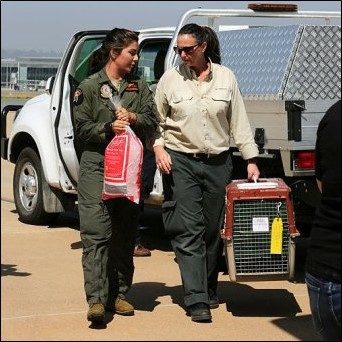
"This is the first time we've carried wallabies on Wallaby Airlines, so it was pretty special for us." No 35 Squadron has been nicknamed Wallaby Airlines since the Vietnam War because of its callsign, Wallaby.
Antonia Guterres (left) and Jenny Pierson
from Parks and Conservation Services
load a rock wallaby.
Meanwhile, 26 eastern bettongs were trapped using chunks of pineapple to lure them. The small marsupials then flew in style on a C-130J Hercules with crew taking extra care in handling the animals that had joeys in their pouches.
Eastern bettongs are extinct in the wild on mainland Australia due to predation; Tasmania is the only place where the population remains secure.
At Avalon airport, a team of dedicated volunteers and wildlife staff waited to greet the precious cargo, thought to be the first in Victoria for 100 years. They were released just after dusk, the day before the wallabies arrived.
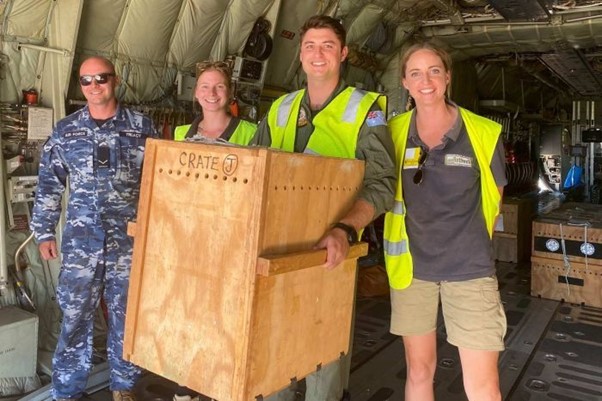
The wallabies, although initially held back from being released due to high temperatures, eventually went off without a hitch, aided by the day's rain. Mr Cotsell continued to keep an eye on the marsupials from his office in Canberra. "They all bounced into their new quarters and were feeding the next day, which is a really good indication that they were happy," he said.
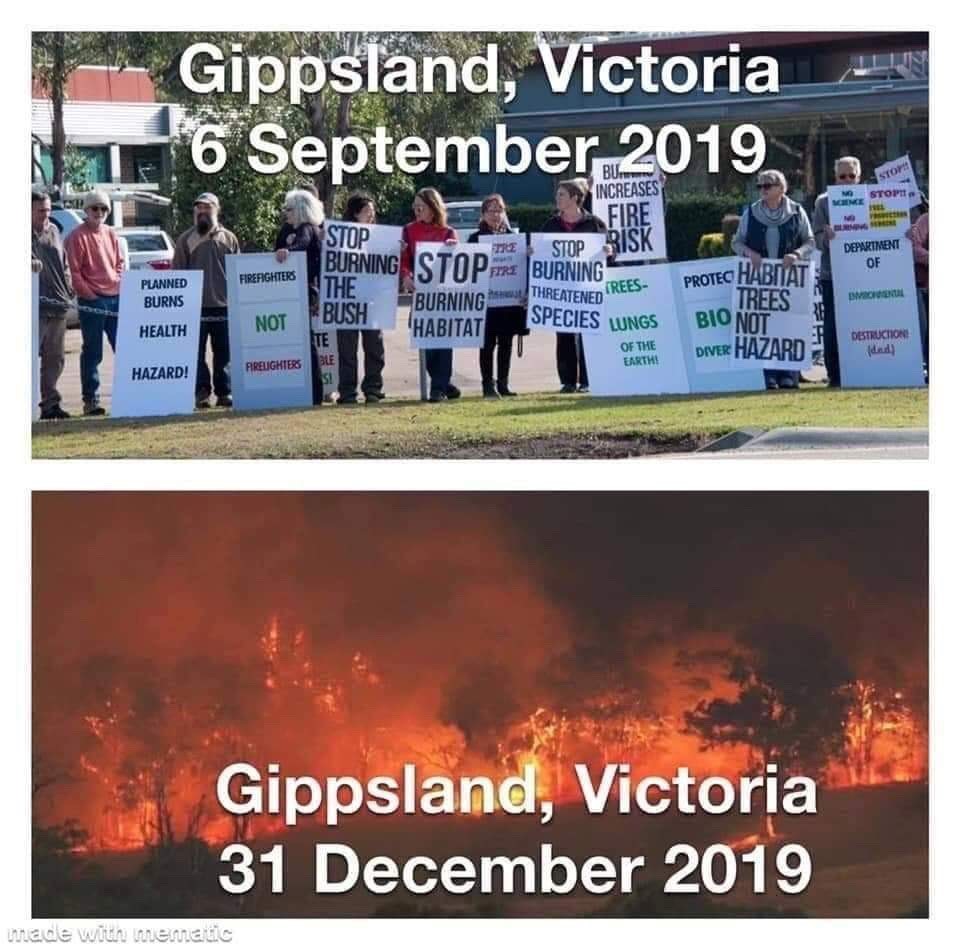
Electric Cars.
Mike Gahan sent us this article which appeared in Forbes magazine in August 2020.
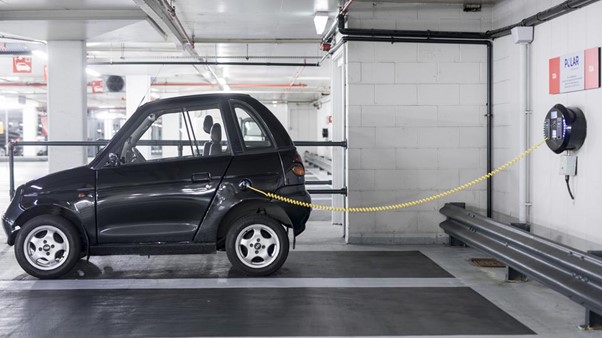
The widespread view that fossil fuels are “dirty” and renewables such as wind and solar energy and electric vehicles are “clean” has become a fixture of mainstream media and policy assumptions across the political spectrum in developed countries, perhaps with the exception of the Trump-led US administration. Indeed, the ultimate question we are led to believe is how quickly can enlightened Western governments, led by an alleged scientific consensus, “decarbonize” with clean energy in a race to save the world from impending climate catastrophe.
The ‘net zero by 2050’ mantra, calling for carbon emissions to be completely mitigated within three decades, is now the clarion call by governments and intergovernmental agencies around the developed world, ranging from several EU member states and the UK, to the International Energy Agency and the International Monetary Fund.
Mining out of sight, out of mind.
Let’s start with Elon Musk’s Tesla. In an astonishing achievement for a company that has now posted four consecutive quarters of profits, Tesla is now the world’s most valuable automotive company. Demand for EVs is set to soar, as government policies subsidize the purchase of EVs to replace the internal combustion engine of gasoline and diesel-driven cars and as owning a “clean” and “green” car becomes a moral testament to many a virtue-signalling customer.
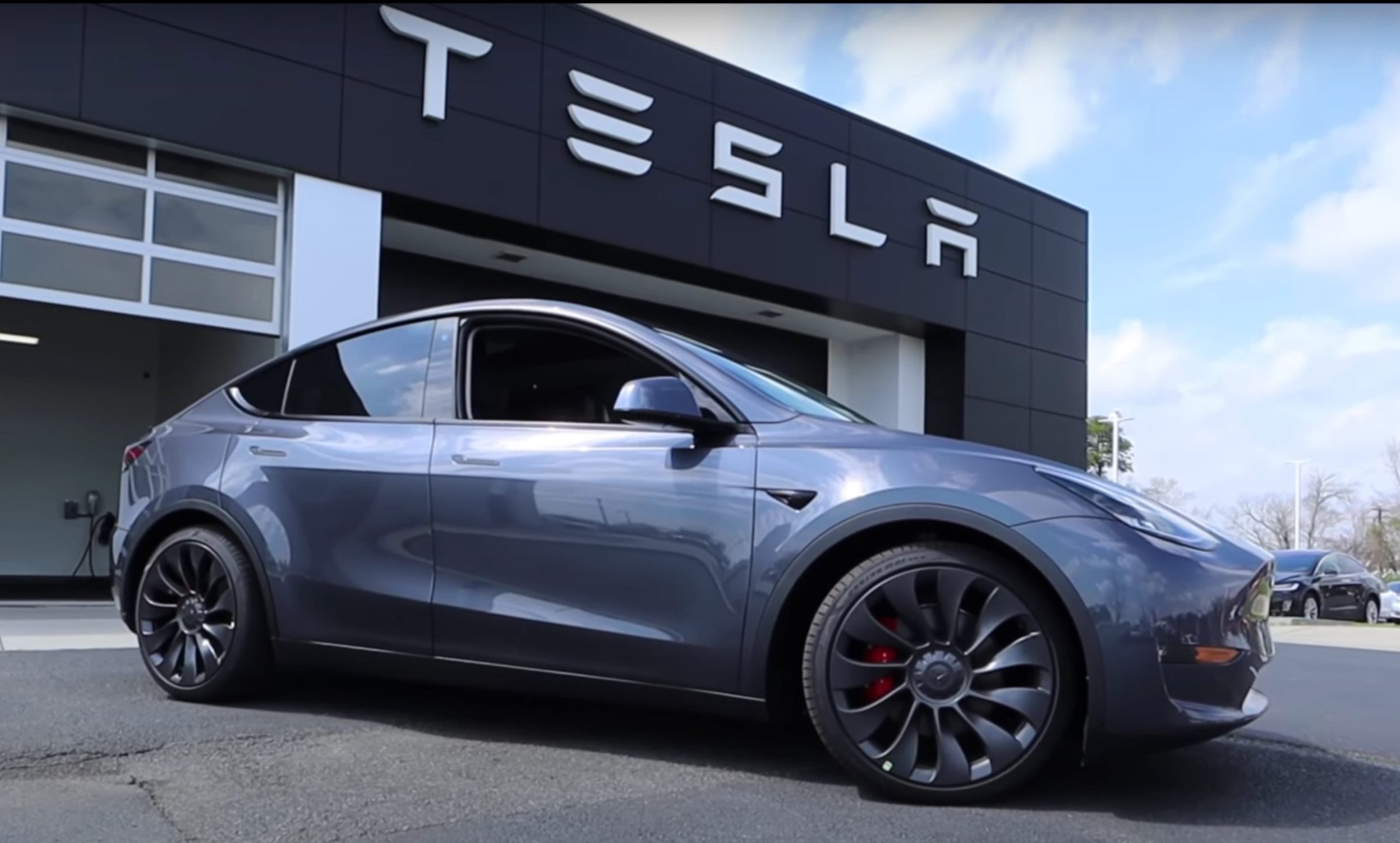
A recent United Nations report warns that the raw materials used in electric car batteries are highly concentrated in a small number of countries where environmental and labour regulations are weak or non-existent. Thus, battery production for EVs is driving a boom in small-scale or “artisanal” cobalt production in the Democratic Republic of Congo which supplies two thirds of global output of the mineral. These artisanal mines, which account for up to a quarter of the country’s production, have been found to be dangerous and employ child labour.
Mindful of what the image of children scrabbling for hand-dug minerals in Africa can do to high tech’s clean and green image, most tech and auto companies using cobalt and other toxic heavy metals avoid direct sourcing from mines. Tesla Inc. struck a deal recently with Swiss-based Glencore Plc to buy as much as 6,000 tons of cobalt annually from the latter’s Congolese mines. While Tesla has said it aims to remove reputational risks associated with sourcing minerals from countries such as the DRC where corruption is rampant, Glencore assures buyers that no hand-dug cobalt is treated at its mechanized mines.
There are 7.2 million battery EVs or about 1% of the world’s total vehicle fleet today. To get an idea of the scale of mining for raw materials involved in replacing the world’s petrol and diesel-fueled cars with EVs, we can take the example of the UK as provided by Michael Kelly, the Emeritus Prince Philip Professor of Technology at the University of Cambridge. According to Professor Kelly, if we replace all of the UK vehicle fleet with EVs, assuming they use the most resource-frugal next-generation batteries, we would need the following materials:
-
about twice the annual global production of cobalt;
-
three quarters of the world’s production lithium carbonate;
-
nearly the entire world production of neodymium;
-
and more than half the world’s production of copper in 2018.
And this is just for the UK. Professor Kelly estimates that if we want the whole world to be transported by electric vehicles, the vast increases in the supply of the raw materials listed above would go far beyond known reserves. The environmental and social impact of vastly-expanded mining for these materials — some of which are highly toxic when mined, transported and processed – in countries afflicted by corruption and poor human rights records can only be imagined. The clean and green image of EVs stands in stark contrast to the realities of manufacturing batteries.
Zero Emissions and All That
Proponents of EVs might counter by saying that despite these evident environmental and social problems associated with mining in many third world countries, the case remains that EVs help reduce carbon dioxide emissions associated with the internal combustion engines run on petrol and diesel fuels. According to the reigning climate change narrative, it is after all carbon dioxide emissions that are threatening environmental catastrophe on a global scale. For the sake of saving the world, the climate crusaders of the richer nations might be willing to ignore the local pollution and human rights violations involved in mining for minerals and rare earths in Africa, China, Latin America and elsewhere.
While one might question the inherent inequity in imposing such a trade-off, the supposed advantages of EVs in emitting lower carbon emissions are overstated according to a peer-reviewed life-cycle study comparing conventional and electric vehicles. To begin with, about half the lifetime carbon-dioxide emissions from an electric car come from the energy used to produce the car, especially in the mining and processing of raw materials needed for the battery. This compares unfavourably with the manufacture of a petrol powered car which accounts for 17% of the car’s lifetime carbon-dioxide emissions. When a new EV appears in the show-room, it has already caused 30,000 pounds of carbon-dioxide emission. The equivalent amount for manufacturing a conventional car is 14,000 pounds.
Once on the road, the carbon dioxide emissions of EVs depends on the power-generation fuel used to recharge its battery. If it comes mostly from coal-fired power plants, it will lead to about 15 ounces of carbon-dioxide for every mile it is driven—three ounces more than a similar petrol powered car. Even without reference to the source of electricity used for battery charging, if an EV is driven 50,000 miles over its lifetime, the huge initial emissions from its manufacture means the EV will actually have put more carbon-dioxide in the atmosphere than a similar-size petrol powered car driven the same number of miles. Even if the EV is driven for 90,000 miles and the battery is charged by cleaner natural-gas fuelled power stations, it will cause just 24% less carbon-dioxide emission than a petrol powered car. As the sceptical environmentalist Bjorn Lomborg puts it, “This is a far cry from ‘zero emissions’”.
As most ordinary people mindful of keeping within modest budgets choose affordable petrol or diesel-powered cars, experts and policy advisors the world over have felt compelled to tilt the playing field in favour of EVs. EV subsidies are regressive: given their high upfront cost, EVs are only affordable for high-income households. It is egregious that EV subsides are funded by the average tax-payer so that the rich can buy their EVs at subsidized prices.
The determination not to know or to look away when the facts assail our beliefs is an enduring frailty of human nature. The tendency towards group think and confirmation bias and the will to affirm the “scientific consensus” and marginalize sceptics, are rife in considerations by the so-called experts committed to advocating their favourite cause. In the case of EVs, the dirty secrets of “clean energy” should seem apparent to all but, alas, there are none so blind as those who will not see.

Back Go to page: 1 2 3 4 5 6 7 8 9 10 11 12 13 14 15 16 17 18 19 20 Forward